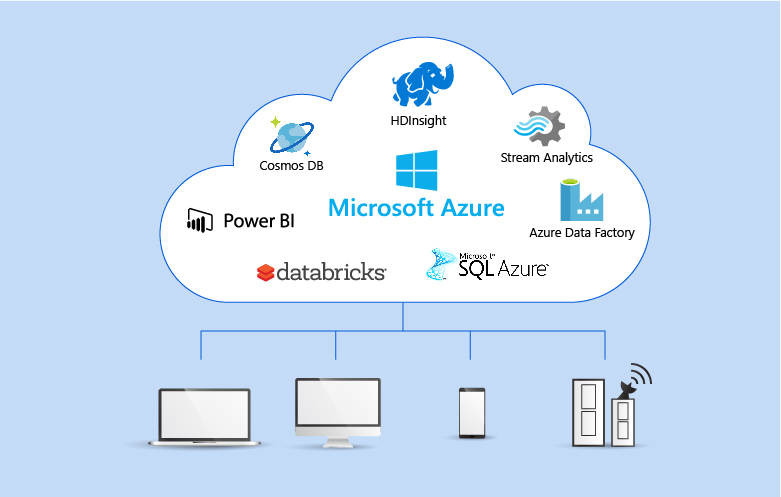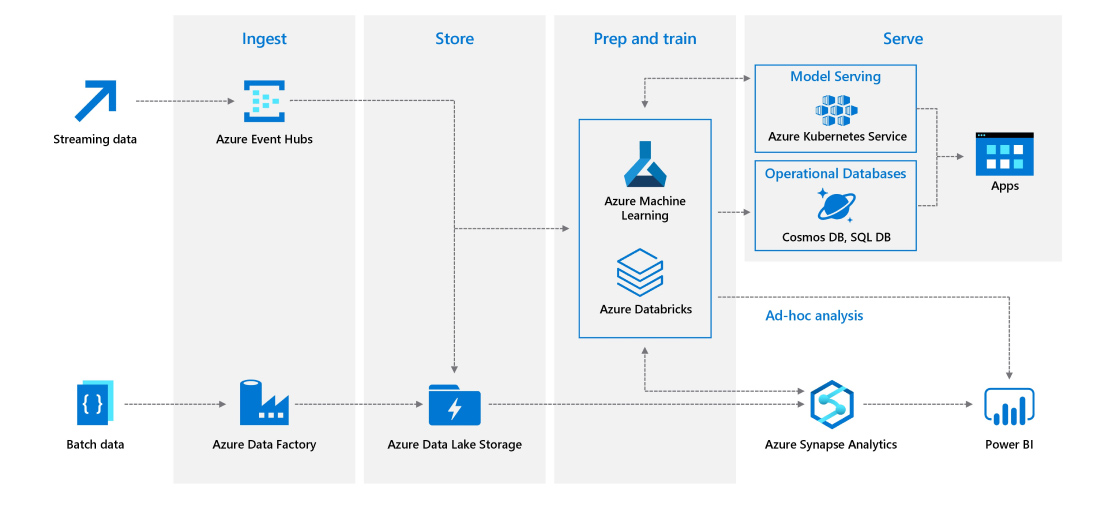
Jun 19, 2020
In this time of worldwide upheaval, as remote work is becoming the new normal and everything is getting tracked digitally, organizations must gain full flexibility and control over a massive flux of data from anywhere, at any time.
Data is a key strategic asset for small to large enterprises and as companies continue to evolve in their digital transformation journey, building and deploying a modern data platform has become the need of the hour. So, to compute, store and analyze data in real-time, several cloud-based tools and services are available in the market today.
The cloud usage has increased since the outbreak of the COVID-19 pandemic, particularly in Microsoft 365, Azure and Teams with Azure’s revenue growth to 62% by the start of 2020.
– Microsoft
For greater productivity, agility and security, enterprises are building data platform on Microsoft Azure using advanced Microsoft tools and services. There are several Azure cloud-based services. While each service serves a different purpose – they can be deemed as a baseline for a data platform. This post will help you to understand the various Azure cloud services to unleash the power of data.
How a data platform can be built using the following Microsoft Azure services
1. Azure Cosmos DB
Azure Cosmos DB is a globally dispersed, NoSQL serverless database service platform from Microsoft. With this fully managed multi-model service, you can architect and govern redundant data across a myriad of Azure regions (at every place where your users reside) with a few clicks. In order to set up an Azure Cosmos DB platform and reap merits of its key features, you must have Azure subscription. The prominent features include:
- Low latency i.e. <10 ms while reading data and <15 ms while writing it
- 99% consistency, availability and throughput
- Access data utilizing APIs like JavaScript, MongoDB, SQL, etc.
- A comprehensive, ready-to-use database service
2. Azure Data Catalog
Do you need data consumption in a range of tools, but there is no way of sharing data artifacts across them? Or are you spending more time looking for data than analyzing it? Then, Azure Catalog is designed specifically for you to address such issues. It is an enterprise-wide metadata catalogue built-in Azure to enable power users (like data scientists, producers or analysts) with the self-service discovery of data from all sources. This makes the entire data asset discovery process quite simple and effortless. However, to enable Data Catalog, you should follow these five steps:
1. Provisioning data catalog
2. Register and annotate assets
3. Discover assets
4. Connect to the data
5. Set-up security for data assets
3. Azure Data Factory
Azure Data Factory (ADF) is Azure’s cloud-based ETL (i.e. Extract, Transform and Load) service that enables power users to extract data from any source, transform them with the help of pipelines and then load the stack of organized data into third-party apps like Power BI to perform data analytics as well as visualization. This means it empowers enterprises to put in place data-driven workflows for automating and orchestrating data movement.
4. Azure Data Lake
Azure Data Lake is a data storage/file storage system that is highly scalable and is distributed in the cloud to store structured or unstructured data of all shapes, sizes and speed. It works within the existing IT infrastructure and can be seamlessly integrated with data warehouses, enabling you to extend your current data apps. Its principal characteristics include –
- Dynamic scaling
- Limitless Azure Blob storage
- Common data model (CDM) support
- Built on HDFS and YARN
- Multi-layer, enterprise-grade security
- Multiple access methods

5. Azure HDInsight
Azure HDInsight is a HADOOP and cloud-based Microsoft offering that gives enhanced open source big data analytics service to businesses. The service comprises of certain cluster types and customization capabilities like the potentiality to add components, plenty of languages and other utilities. HDInsight uses the Hortonworks Data Platform (HDP) configurations for creating clusters and it configures these clusters using multiple virtual machines.
6. Azure Stream Analytics
Azure Stream Analytics is an on-demand, real-time serverless analytics service that delivers rich, powerful insights to enterprises from their live streaming data. The data retrieved should be in a CSV, AVRO or JSON format while the output data i.e. the app logic can be programmed in any command language such as SQL in Azure Stream Analytics.
- Real-time analytics with Power BI
- No infrastructure set-up required
- Low TCO due to the pay-as-you-go model
- Increased programmer productivity
- Store streaming data over the cloud
7. Cortana Intelligence
The Cortana Intelligence Suite is a fully integrated, cloud-based analytics and data platform in Azure. It fosters enterprises to build integrated apps that can be deployed straightaway on user devices. The suite offers you a set of data services utilizing the power of the cloud, business intelligence and big data. When it comes to Cortana implementation and the cost associated with it, it becomes a ’choose what you want’ model i.e. it varies depending on the budget and needs of an organization.
8. Microsoft Power BI
Power BI is Microsoft’s cloud-based collaboration environment, utilized for sharing business intelligence (BI) content and dashboards with users. Since its launch, it has been picked up by numerous organizations with millions of users around the globe to create a data-driven culture. Connecting Power BI with Azure analytics can help you connect and analyze your entire data ecosystem. Power BI comprises of:
- Power BI mobile apps – To monitor the project’s progress
- Power BI desktop – To build dashboards and reports
- Power BI service – To view dashboards and reports
9. Azure Databricks
Azure Databricks is an Apache Spark-based analytics service, used for processing different types of data (mostly unstructured) along with batch processing, machine learning and data streaming. The unified cloud-based platform permits you to build an enterprise data platform with Azure and seamlessly integrate with open source libraries. Thus, it can help you to accelerate and streamline the data analytics process on massive datasets. Some of its key attributes are:
- Highly collaborative and scalable
- Supports multiple languages
- Streamlined, one-click rapid set-up
- Dynamically auto-scale up or down
- Secure data integration capabilities
Realize the potential of Microsoft Azure services
Data analytics help enterprises to uncover rich insights, improve efficiency, make smarter business moves and reduce operational costs. So, organizations are formalizing their way to the cloud and data-driven intelligence.
If you want to stay ahead of the pack and build a modern database warehouse to experience the power of the suite of Azure cloud services, get in touch with our team of experts and they will help you from consulting to transitioning to implementing immersive Azure data platform services.
Need Help ?
We are here for you
